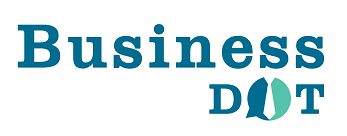
In situations when a lot of money is at risk, it’s not unusual for people to struggle with being able to “see the forest for the trees.” But if you want to improve your personal finances, you need assess your actual cost of living and decide which alterations are feasible for you. Although many Americans have the means to save money or have some extra cash on hand, many nonetheless choose to live from paycheck to paycheck. Here are the tips to stop living paycheck to paycheck?
Tips for breaking the cycle of financial insecurity
It’s too easy to spend money, which is a concern especially when resources are few. However, there is no need for alarm, as there are ways to make the money you already have go farther, and maybe even start adding to it, even in times of high inflation and interest rates.
Make a Spending Plan
With the help of a well-balanced budget, you’ll be able to better prioritise your spending and have enough money to cover your monthly needs, much alone your weekly bills. The more you plan ahead, the less surprises you’ll have to deal with, which means you’ll have more money saved up.
It’s generally good to break down the figures to the smallest feasible percentage point when making a budget. Two further percentage-based approaches to budgeting are as follows:
70/20/10 rule
According to the 70/20/10 budgeting rule, a person should spend 70% of their income on necessary living expenditures like rent, food, and utilities; 20% on savings and investments; and 10% on paying off debt.
50/30/20 rule
According to the 50/30/20 budgeting guideline, you should save 20% of your monthly income. That leaves you with fifty percent to cover your requirements, which might include things like rent and groceries. You are free to do anything you choose with the remaining 30% of your funds.
Invest your money so that it works for you.
You may tailor any of these solutions to your own needs and budget. You might, for instance, do sixty-two hundred and twenty instead of fifty-three hundred and twenty if you spend sixty percent of your monthly budget on requirements. Identify your most important outlays first, such as housing, food, and other needs, and then use that information to calculate how much of your income should be spent on each item of your budget.
Reduce Nonessentials
When figuring out how to manage your money, you may realise that you can cut down in other areas of your life. Forgetting to cancel a streaming service subscription, for example, can result in continued monthly charges even if you are not actively utilising the service.
Check off as many as you can as you go through the list. Don’t be fooled by their modest price tag; deleting just a few services that cost you a few dollars monthly might end up saving you quite a bit of money over time.
Start putting money aside in case of emergency.
Having money set up in a special savings account for emergencies like medical expenses, car repairs, or job loss is as simple as opening a savings account.
Conclusion
If you are unable to save a certain amount each month, even a little amount saved at a time will help you get closer to your savings goal. You may choose from a wide variety of savings accounts, the vast majority of which waive minimum balance fees. This indicates that your funds may acquire value independently.

